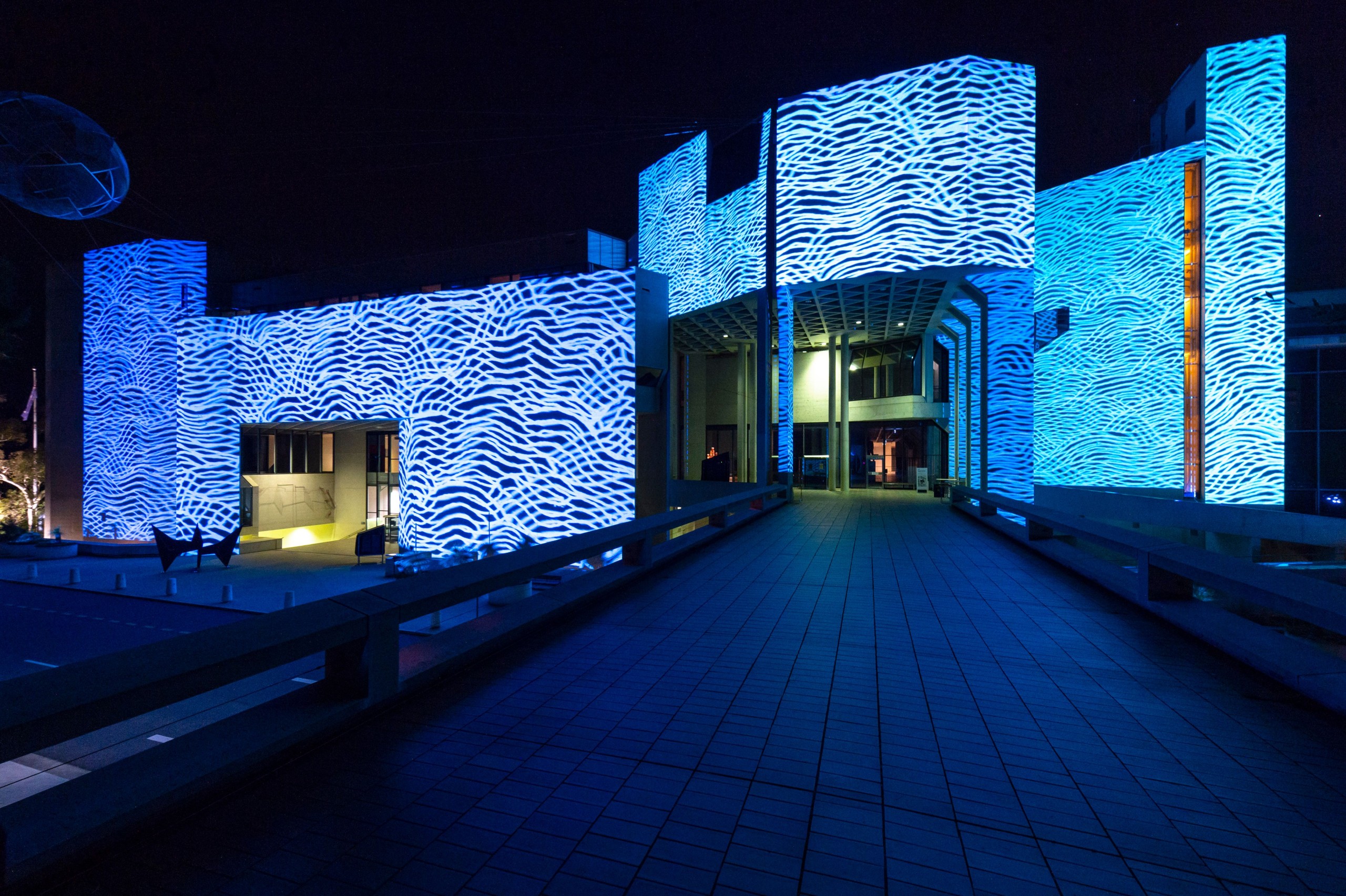Somewhat to the surprise of non-Canberrans it seems that the heavily-hyped Vivid Festival in Sydney has been matched by an Enlighten Festival in Canberra for the past 12 years. Now in its 13th year, it is once again lighting up the nation’s capital for 17 days from last Friday to Sunday 19 March. One of the structures to be enlightened will be another surprise, the Malcolm Fraser Bridge!
Another will be the National Gallery, which has commissioned a projection and sound-based work from Yirrkala’s Mulka Project to cover the whole of the building’s 60m western façade.
Entitled Djarraṯawun, the commission will be projected on to the odd-shaped architectural features of the Gallery’s walls. Djarraṯawun is a composite video/animation work portraying the elemental forces and life cycles of the Yolŋu world. The three major elements of Djarraṯawun are walu (sunlight), makarran (lightning) and gurtha (fire). These elements intertwine with songlines and atmospheric soundscapes immersing viewers in the distant cultural world of northeast Arnhemland.
Songs by senior Elders are accompanied by archival recordings mixed in the increasingly inventive Mulka studio. The projection’s visual elements include composite video using new footage and archival imagery, also layered with 3D animation developed by the Mulka team lead by artist Ishmael Marika.
“The narrative begins with a campfire at sunrise over the northern coastline. The sounds of the sea meld with Yolŋu voices, as the images scan over people gathering oysters, before the vista expands to include men with spears wandering in the distance, calling for stingray, mud crabs and fish. The gathered food is placed on the fire and begins to cook with rising smoke obscuring the sunset and engulfing the façade of the NGA, before it transforms into storm clouds (warumuk wangupini). The moon rises to illuminate the clouds, which roll across the building as lightning begins to strike. The songlines of thunder man Bunuwal emerge from the soundscape as the lightning builds, finally striking a column of the building with a flash—and then the singing stops. Sparks stimulate a grass fire that begins at the base of the column to spread into gadayka (stringy bark forest). Children’s voices emerge to sing to the fire as it runs across the building and finally peters out, with a solitary campfire burning as the sun rises, completing the cycle”.
The Buku Larrnggay Art Centre Director, Will Stubbs explains that The Mulka Project is now a staple of the arts centre. “It was set up to serve an archival purpose but has developed well beyond that role,” he explains. “It is still used as the place to go for ceremony—we have hundreds and hundreds of hours of ceremony. And there is a space here, Yalu (bird’s nest) which has 10 iMacs which default to the archive. But it’s also the main place people go for banking and Facebook, though 90% of the time, people are going through the archive. After school it’s pumping with kids, watching archival films. It is very much the media hub of the community, delivered like Netflix to the Yolŋu; broadcasting the archive. You can’t overestimate watching films in Yolŋu language about you, your culture, your language and your life. It is epic”.
Partnering with Ishmael Marika was Gutiŋarra Yunupingu, whose video work Gurruṯu’mi Mala – my connections took out the Telstra National Aboriginal and Torres Strait Islander Art Multimedia Award (NATSIAA) in 2019. The artist was born hearing impaired and therefore learnt the traditional Yolŋu sign language as his first language. It’s not just for the deaf, but also a way of both communicating at a distance and silently while hunting. In the 2019 work, Yunupingu filmed himself using 10 different gestures on a single screen – clever stuff technically.
And curating for the NGA was Bruce Johnson-McLean of the Wierdi | Birri Gubba people, Assistant Director, First Nations Engagement and Head Curator, Aboriginal and Torres Strait Islander Art.



